Suzuki Ignis SUV (2017-2025) running costs and reliability

Miles per pound (mpp) ⓘ
| Petrol engines | 7.4 - 8.5 mpp |
|---|---|
| Hybrid petrol engines | 7.1 - 7.9 mpp |
Fuel economy ⓘ
| Petrol engines | 50.4 - 58 mpg |
|---|---|
| Hybrid petrol engines | 48.6 - 54.1 mpg |
- Sole engine choice is efficient
- Automatic gearbox and four-wheel drive hurt consumption
- Other running costs should be low
What are the running costs?
The Suzuki Ignis has just one engine option and, thanks to its mild hybrid battery assistance and the car’s light weight, it’s a very efficient choice.
Combined fuel consumption is 55.7mpg, which makes it more efficient than the Hyundai i10, Volkswagen Up or Kia Picanto. The same goes for its CO2 emissions, which sit at a very low 114g/km – making the Ignis’ first year tax bill easy to stomach.
The two additions to the engine both affect fuel economy negatively. Adding on a CVT gearbox brings economy down to 51.3mpg and emissions up to 124g/km, while for the AllGrip four-wheel drive system those figures are 51.9mpg and 123g/km respectively. The two can’t be selected together.

The slightly strange outlier is that the Ignis is in a very high insurance group for such a small car. No model is lower than group 15, so it’s well worth getting a few quotes before you consider buying to make sure this won’t affect your premiums too much.
We ran a pre-facelift Ignis as a long-term test car and performed a staggering economy run in it, so click here to read about that.
Servicing and warranty
Suzuki recommends you service the Ignis every 12 months or 12,500 miles (whichever comes first). To help you manage your costs, the brand offers a range of service plans to that offer fixed prices for parts and labour for up to three years. You can either pay for the entire plan up front or spread the cost out across monthly instalments.
In April 2023, Suzuki introduced a new warranty scheme designed to make its cars more competitive with the likes of Kia, MG and SsangYong. Every new Suzuki is now available with a seven-year/100,000-mile warranty, thrusting the brand into joint second place in the UK car warranty charts.
The deal works in the same fashion as Toyota’s 10-year Relax warranty scheme. Every Suzuki has a three-year manufacturer warranty as standard. After that initial period has elapsed, Suzuki will add another year’s worth of warranty each time you take your car to one of its official dealerships for its annual service.
Reliability
- No official recalls
- Suzuki reliability typically very high
- Ignis should last a long time
There’s little to say on this front – the Ignis is a reliable little city car, with Suzuki having a strong reputation for dependability. The Ignis hasn’t been subject to any official recalls nor are there any particularly glaring reliability issues that have shown up since it went on sale.
We’d take care if buying secondhand, though, as the lightweight construction may mean the Ignis is more easily dented than some of its rivals.
Ongoing running costs
| Road tax | £20 - £195 |
|---|---|
| Insurance group | 15 - 21 |
Get an insurance quote with

|
|






.jpg)
.jpg)
.jpg)
.jpg)
.jpg)
.jpg)
.jpg)
.jpg)

.jpg)


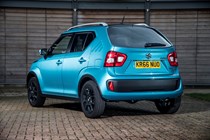


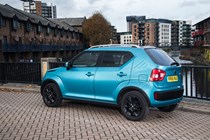









.jpg)
.jpg)
.jpg)
.jpg)
.jpg)
.jpg)
.jpg)
.jpg)
.jpg)
.jpg)
.jpg)
.jpg)
.jpg)
.jpg)
.jpg)
.jpg)
.jpg)
.jpg)
.jpg)


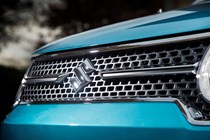
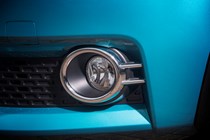








.jpg)
.jpg)
.jpg)
.jpg)
.jpg)
.jpg)
.jpg)
.jpg)
.jpg)
.jpg)
.jpg)
.jpg)
.jpg)
.jpg)
.jpg)
.jpg)
.jpg)
.jpg)
.jpg)
.jpg)
.jpg)
.jpg)
.jpg)
.jpg)
.jpg)
.jpg)
.jpg)
.jpg)
.jpg)
.jpg)
.jpg)
.jpg)











.jpg)

.jpg)
.jpg)
.jpg)
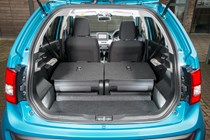


.jpg)
.jpg)
.jpg)
.jpg)
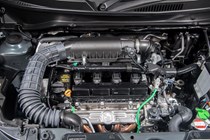




.jpg?quality=50)
.jpg?quality=50)
.jpg?quality=50)
.jpg?quality=50)
.jpg?quality=50)
.jpg?quality=50)
.jpg?quality=50)
.jpg?quality=50)

.jpg?quality=50)















.jpg?quality=50)
.jpg?quality=50)
.jpg?quality=50)
.jpg?quality=50)
.jpg?quality=50)
.jpg?quality=50)
.jpg?quality=50)
.jpg?quality=50)
.jpg?quality=50)
.jpg?quality=50)
.jpg?quality=50)
.jpg?quality=50)
.jpg?quality=50)
.jpg?quality=50)
.jpg?quality=50)
.jpg?quality=50)
.jpg?quality=50)
.jpg?quality=50)
.jpg?quality=50)












.jpg?quality=50)
.jpg?quality=50)
.jpg?quality=50)
.jpg?quality=50)
.jpg?quality=50)
.jpg?quality=50)
.jpg?quality=50)
.jpg?quality=50)
.jpg?quality=50)
.jpg?quality=50)
.jpg?quality=50)
.jpg?quality=50)
.jpg?quality=50)
.jpg?quality=50)
.jpg?quality=50)
.jpg?quality=50)
.jpg?quality=50)
.jpg?quality=50)
.jpg?quality=50)
.jpg?quality=50)
.jpg?quality=50)
.jpg?quality=50)
.jpg?quality=50)
.jpg?quality=50)
.jpg?quality=50)
.jpg?quality=50)
.jpg?quality=50)
.jpg?quality=50)
.jpg?quality=50)
.jpg?quality=50)
.jpg?quality=50)
.jpg?quality=50)











.jpg?quality=50)

.jpg?quality=50)
.jpg?quality=50)
.jpg?quality=50)



.jpg?quality=50)
.jpg?quality=50)
.jpg?quality=50)
.jpg?quality=50)
